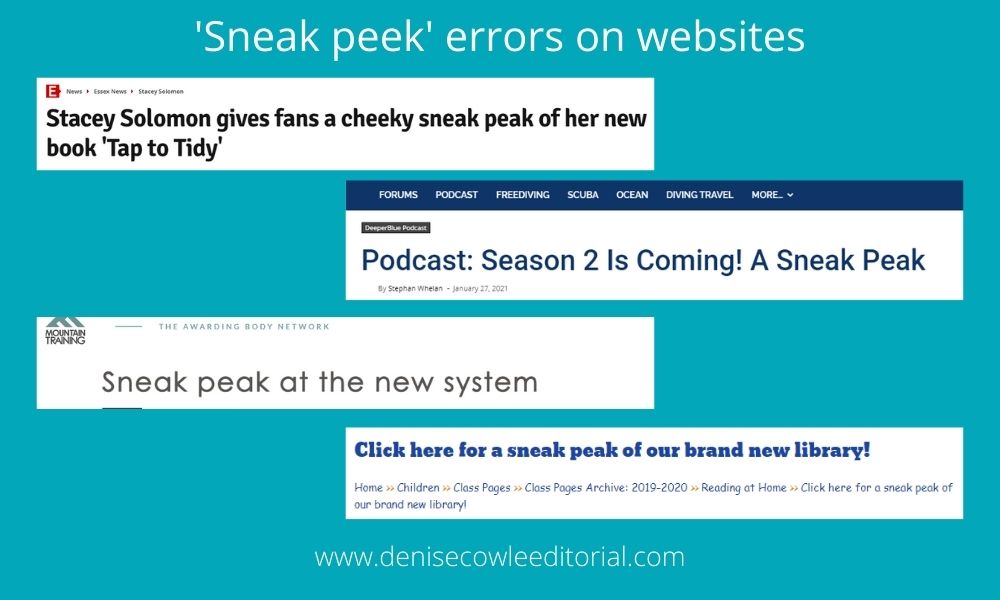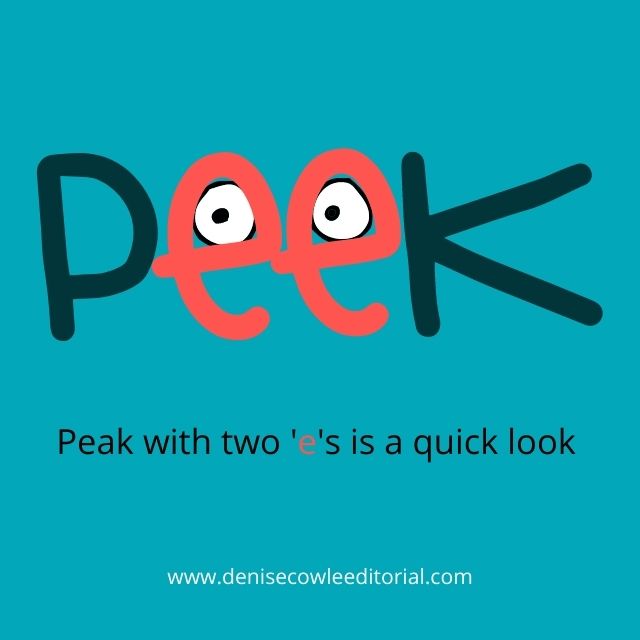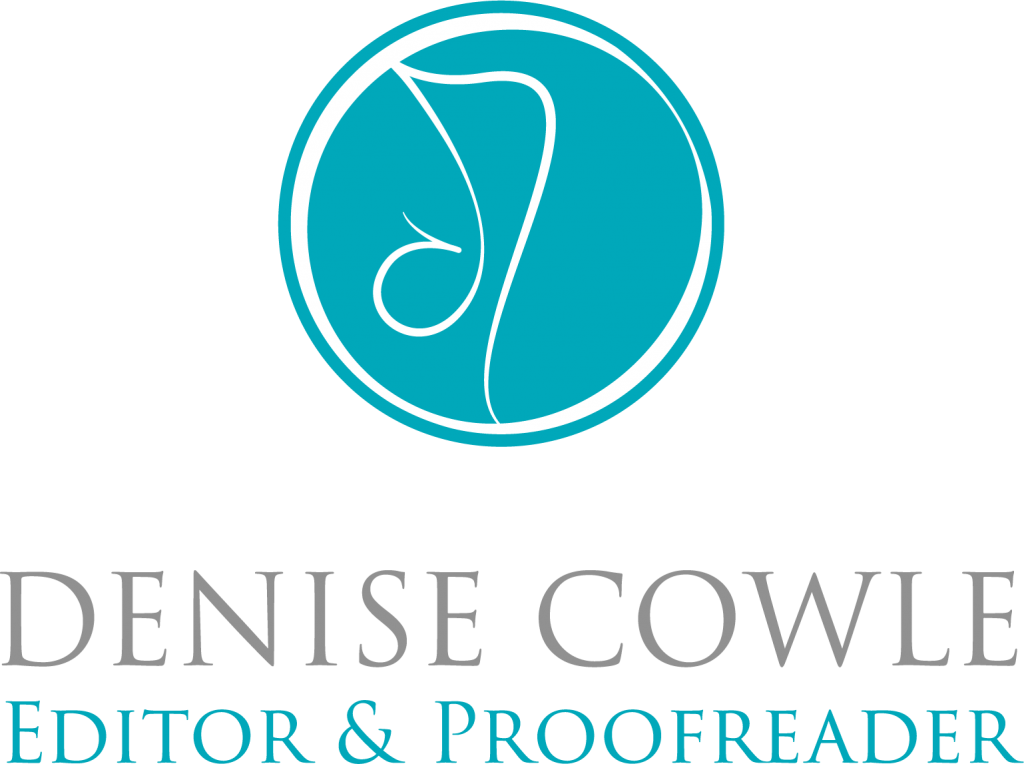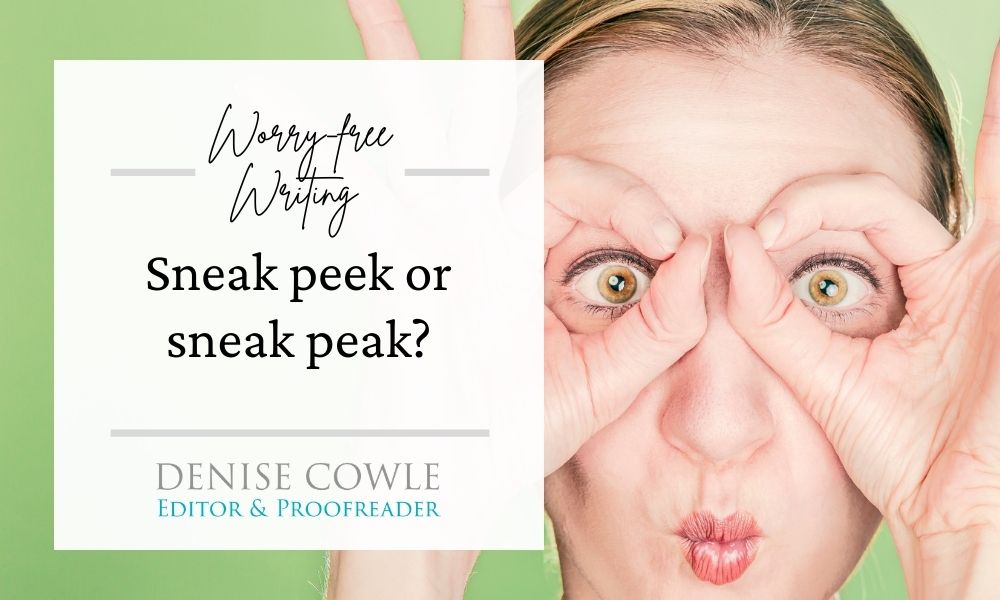It’s easy to slip up and write sneak peak instead of sneak peek – muscle memory, whether we’re typing or handwriting, wants us to repeat that eak ending.
This explains why we end up seeing sneak peak so often, when what the writer really means is sneak peek.
So if you want to give your clients a preview of an exciting new service or product, make sure you’re offering them the right thing.
If you’d rather watch the video version of this blog, you can click on the image below.
Is it sneak peak or sneak peek?
Giving clients a preview of a product or service ahead of time is a common strategy, but don’t offer them a sneak peak. I don’t know about you, but that makes me think of mountains tiptoeing up behind me!

A peak is a mountain.
But you’re not offering mountains, so spelling it peak is sending the wrong message! You want your clients to have a peek – a quick look at the fabulous stuff you’re creating for them.

A peek is a quick look.
To peek is to look quickly at something, or look while partially hidden. That’s what you’re aiming for with your preview!
It’s such a common mistake that it’s really easy to find examples. Here are some from Twitter.

You might think it doesn’t matter too much, as Twitter posts have such a short shelf life, but your Twitter posts are still part of your brand and you should give them the same attention that your web copy gets, for example.
But, unfortunately, too many companies still make the mistake on their websites.

It seem like a small thing, but it will stand out to people who understand the difference, and they could be your perfect client or customer. Don’t give them the opportunity to decide to go elsewhere because they think you’re a bit careless.
How do I remember the difference between peak and peek?

Think of the ‘A‘ in peak as a mountain.

The two ‘e‘s in peek are like eyes.
So when you want to give someone a quick look at a new product, or show them behind the scenes of your business, remember you’re giving them a peek with their eyes!
What does pique mean?
Peak, peek and pique are homophones, which means they are all pronounced the same way but have a different spellings and meanings.
Pique means to arouse interest or curiosity, or to feel irritated and resentful.
Which means that a sneak pique is not a thing.
And neither is peaking someones interest, or peeking their interest, or feeling peaked at something. You use pique in each of these examples:
- You pique someone’s interest in your services.
- If someone gives your service a bad review you might feel piqued.
- And you might want to pique a potential customer’s interest in your new product by giving them a sneak peek.
See what I did there?
Related content
If you struggle with spelling, there are other posts in my Worry-free Writing series that can help you.






